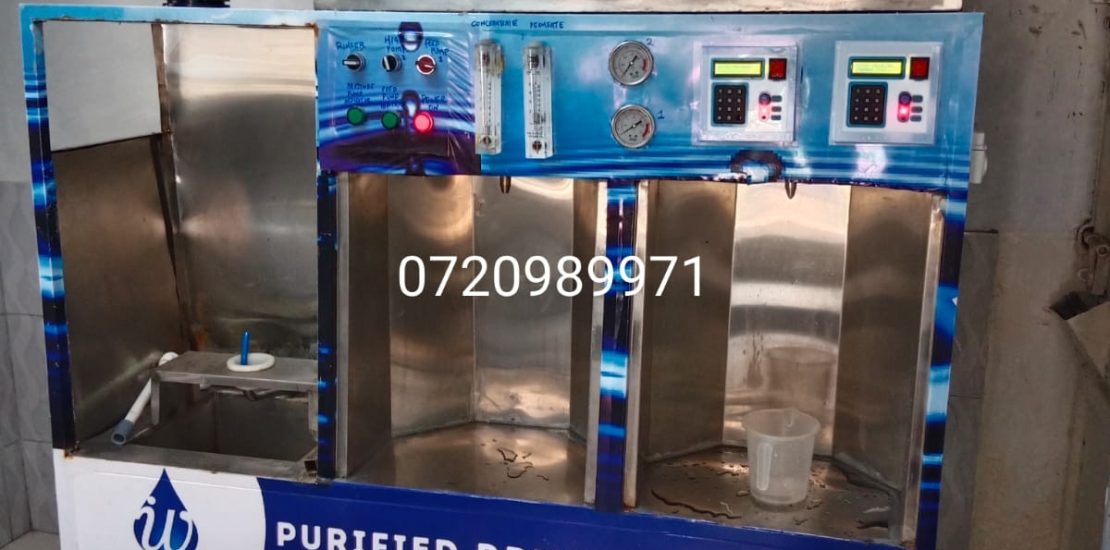- October 20, 2023
- Posted by: VisionPlus Automation
- Category: Water vending machine

The Benefits of Installing Water Vending Machines in Kenyan Ghettos
The Benefits of Installing Water Vending Machines in Kenyan Ghettos
Introduction
Access to clean and safe drinking water is a fundamental human right, yet millions of people, especially those residing in underprivileged areas like Kenyan ghettos, still lack this essential resource. The installation of water vending machines in these marginalized communities has the potential to bring about numerous benefits, improving the lives of the residents and addressing pressing water-related challenges. This essay explores the advantages of installing water vending machines in ghetto areas of Kenya, focusing on the positive impact on health, convenience, affordability, employment opportunities, and community empowerment.
1. Improved Health and Hygiene
One of the most significant benefits of installing water vending machines in ghetto areas is the positive impact on public health and hygiene. Access to clean and safe drinking water is crucial for preventing waterborne diseases. By providing a convenient and reliable source of purified water, vending machines reduce the risk of waterborne illnesses, which disproportionately affect marginalized communities. This results in improved health outcomes and a decrease in healthcare expenses, as residents are less likely to suffer from water-related illnesses.
2. Convenience and Accessibility
Water vending machines offer a convenient and accessible solution for the residents of ghetto areas. These machines are strategically placed in key locations within the community, reducing the need for residents to travel long distances to fetch water. This increased convenience means residents can focus on other aspects of their lives, such as education, employment, and community involvement, rather than spending excessive time and effort on securing water.
3. Affordability
Water vending machines often provide water at a lower cost per liter compared to other sources like bottled water or private vendors. This affordability is particularly important for communities with limited financial resources. Installing vending machines allows residents to access clean water without straining their budgets, improving their overall quality of life.
4. Employment Opportunities
The installation of water vending machines also generates employment opportunities within the community. Local residents can be trained and employed as operators, ensuring that income remains within the ghetto and supports community members. Additionally, the maintenance and upkeep of the machines create opportunities for technicians and suppliers, further stimulating the local economy.
5. Community Empowerment
Water vending machines have the potential to empower ghetto communities in Kenya. By taking control of their water supply and distribution, residents can become more self-sufficient and resilient. This empowerment extends beyond water access and can foster a sense of pride and ownership among the residents. It can also encourage community members to take a more active role in improving other aspects of their living conditions.
6. Reduced Environmental Impact
Water vending machines often use reusable containers, reducing the environmental impact compared to single-use plastic bottles. This environmental responsibility aligns with global sustainability goals and promotes eco-friendly consumption practices within the community.
Conclusion
Installing water vending machines in Kenyan ghetto areas is a powerful and transformative approach to addressing water-related challenges. The benefits extend beyond the simple provision of water; they encompass improvements in health, convenience, affordability, job creation, community empowerment, and environmental stewardship. By investing in water vending machines in marginalized communities, Kenya can take a significant step towards ensuring that every citizen has access to clean and safe drinking water, thereby enhancing their overall well-being and quality of life.
